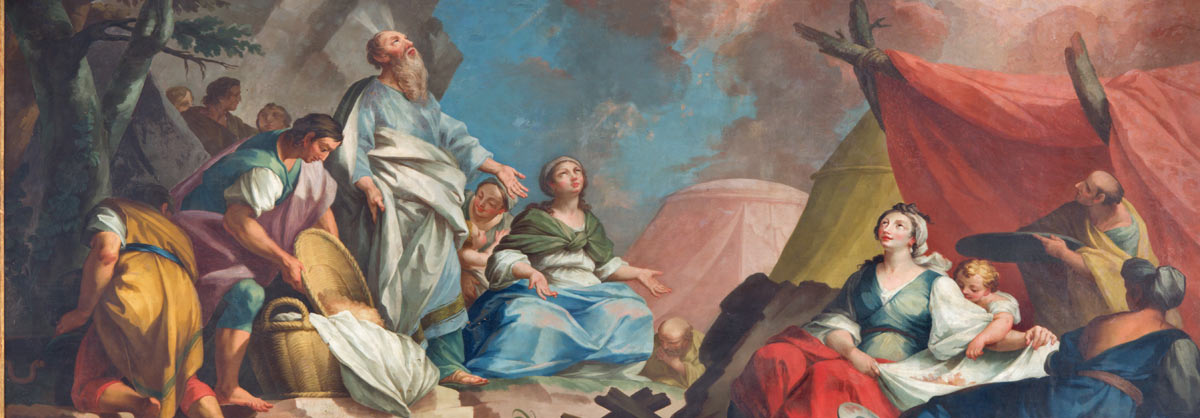
Hope in the Darkness | Week One
An Advent Journey with St. Elizabeth Ann Seton | A Five-Part Series
For countless long centuries, the world was black as night. The sun still rose and shone everyday, but men and women were surrounded by a darkness that no light could penetrate.
That darkness was the darkness of a world with no hope for heaven. Sin, sorrow, and loss were everywhere. The gates to Heaven were closed to all. And despair was the lot of mankind.
Of all the peoples of the earth, however, one hoped for something more: Israel.
Israel knew God had promised a redeemer. The Lord had made a covenant with His people, and they trusted He would keep word.
So, while the world suffered through darkness and despaired, Israel suffered through darkness and hoped. During Advent, the Church calls us to remember both the world’s darkness and Israel’s hope in the midst of it. She does this so our eyes can perceive the true radiance of Christmas Day. She also does this so we can see our own story, in the world’s story.
Each of us, in some way, has to suffer through darkness before entering into the luminous light of heaven. But in the midst of the darkness, like Israel, we’re called to hope.
That hope doesn’t always come easy, even for the saints among us.
When Saint Elizabeth Ann Seton was a teenager, she felt immersed in a seemingly inescapable darkness. In the midst of her father and step-mother’s marital troubles, the world seemed so bleak, that Elizabeth contemplated taking her life. For the rest of her days, she lamented the “wretched reasoning” that almost led her to despair.
In the years that followed, though, as Elizabeth’s faith grew, so did her ability to hope in the midst of darkness.
After her husband’s death, while she wrestled with the decision to become Catholic, Elizabeth experienced a type of spiritual desolation that the Church’s mystics call a “dark night.” She could take no comfort in the things of the world and even spiritual consolation couldn’t penetrate the darkness. But her hope in God’s faithfulness endured.
“My soul is sorrowful—my spirit weighed down even to the dust, cannot utter one word to Thee my Heavenly Father,” she wrote in her journal. “But still it seeks its only refuge and low at thy feet waits its deliverance.”
Eight years later, after the death of her oldest daughter, Elizabeth described how she passed a night:
“on the grave of Anina—begging crying to Mary to behold her son and plead for us…to pity a mother…so uncertain of reunion—then the Soul quieted even by the desolation of the falling leaves around began to cry out from Eternity to Eternity thou art God all shall perish and pass away—but thou remainest forever.”
For Elizabeth, there would be more dark nights—more loss, more disappointment, more confusion. But in the midst of the darkness, she never lost her hope for heaven. Even when she couldn’t see the light, she trusted the light would come.
As we journey through the darkness of this Advent, may God grant us the same hope—the hope of Saint Elizabeth Ann Seton and the hope of Israel.
Questions for Reflection
- What has been the darkest time in your life?
- Did you have hope in the midst of that darkness?
- How has having hope in times of darkness changed your experience of the darkness?
INTRODUCTION | An Advent Journey with St. Elizabeth Ann Seton
WEEK ONE | Hope in the Darkness
WEEK TWO | To Trust God and Repent
WEEK THREE | Waiting for the Lord
WEEK FOUR | God Is With Us
Emily Stimpson Chapman is an award-winning writer on ‘all things Catholic’—from politics and catechesis to higher education and the media, with a special focus on the Church’s teachings on marriage, sexuality, and femininity. She is the author of many books including Letters to Myself from the End of the World (Emmaus Road, 2021), Hope to Die: The Christian Meaning of the Resurrection of the Body (co-authored with Scott Hahn, 2020, Emmaus Road), and The Catholic Table: Finding Joy Where Food & Faith Meet (Emmaus Road, 2016). She has co-authored three children’s books with Scott Hahn: Mary:Mother of All, The Supper of the Lamb, and the recently released Lord, have Mercy. Honored by the Catholic Press Association and the Associated Church Press, you can read Emily’s latest at her Substack newsletter Through a Glass Darkly, and on Instagram (@emilystimpsonchapman). Links to all her content can be found at her linktree page. She lives in Pittsburgh with her husband and three young children, ages 4, 2, and 1.
Image: Moses and the Israelites Gathering Manna, 16th century, unknown painter, Cathedral of Santa Maria Assunta (Duomo) and the Eucharist chapel, Padua, Italy.